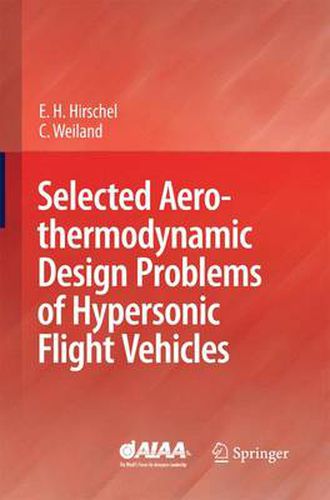Readings Newsletter
Become a Readings Member to make your shopping experience even easier.
Sign in or sign up for free!
You’re not far away from qualifying for FREE standard shipping within Australia
You’ve qualified for FREE standard shipping within Australia
The cart is loading…






This title is printed to order. This book may have been self-published. If so, we cannot guarantee the quality of the content. In the main most books will have gone through the editing process however some may not. We therefore suggest that you be aware of this before ordering this book. If in doubt check either the author or publisher’s details as we are unable to accept any returns unless they are faulty. Please contact us if you have any questions.
Hypersonic ?ight and aerothermodynamics are fascinating topics. Design problems and aerothermodynamic phenomena are partly very di?erent for the various kinds of hypersonic ?ight vehicles. These are-and will be in the future-winged and non-winged re-entry vehicles as well as airbreathing cruise and acceleration and also ascent and re-entry vehicles. Both authors of the book worked for almost four decades in hypersonics: at the German aerospace research establishment (DVL/DFVLR, now DLR) to the end of the 1970s, then in industry (MBB/Dasa, now EADS). They were involved in many major technology programs and projects. First, in the early 1970s, the German ART program (Association for Re-Entry Te- nologies), and, in the 1980s, the European (ESA) HERMES project and the .. German Hypersonics Technology (SANGER) program. Then followed, in the 1990s, the Future European Space Transportation Investigations program (FESTIP), the Manned Space Transportationprogram(MSTP) with the - mosphericRe-EntryDemonstrator(ARD), theX-CRVProjectwiththe X-38 vehicle and, later, the German technology programs TETRA (Technologies for Future Space Transportation Systems), ASTRA (Selected Systems and Technologies for Future Space Transportation Systems Applications), and IMENS (Integrated Multidisciplinary Design of Hot Structures for Space - hicles). Research in the 1960s and 1970s placed great emphasis on low-density ?ows, high temperature real gas e?ects in ground-simulation facilities and, already, on discrete numerical computation methods. After the ?rst ?ights of the Space Shuttle Orbiter with its generally very good aerodynamic p- formance, interest in low-density problems diminished.
$9.00 standard shipping within Australia
FREE standard shipping within Australia for orders over $100.00
Express & International shipping calculated at checkout
This title is printed to order. This book may have been self-published. If so, we cannot guarantee the quality of the content. In the main most books will have gone through the editing process however some may not. We therefore suggest that you be aware of this before ordering this book. If in doubt check either the author or publisher’s details as we are unable to accept any returns unless they are faulty. Please contact us if you have any questions.
Hypersonic ?ight and aerothermodynamics are fascinating topics. Design problems and aerothermodynamic phenomena are partly very di?erent for the various kinds of hypersonic ?ight vehicles. These are-and will be in the future-winged and non-winged re-entry vehicles as well as airbreathing cruise and acceleration and also ascent and re-entry vehicles. Both authors of the book worked for almost four decades in hypersonics: at the German aerospace research establishment (DVL/DFVLR, now DLR) to the end of the 1970s, then in industry (MBB/Dasa, now EADS). They were involved in many major technology programs and projects. First, in the early 1970s, the German ART program (Association for Re-Entry Te- nologies), and, in the 1980s, the European (ESA) HERMES project and the .. German Hypersonics Technology (SANGER) program. Then followed, in the 1990s, the Future European Space Transportation Investigations program (FESTIP), the Manned Space Transportationprogram(MSTP) with the - mosphericRe-EntryDemonstrator(ARD), theX-CRVProjectwiththe X-38 vehicle and, later, the German technology programs TETRA (Technologies for Future Space Transportation Systems), ASTRA (Selected Systems and Technologies for Future Space Transportation Systems Applications), and IMENS (Integrated Multidisciplinary Design of Hot Structures for Space - hicles). Research in the 1960s and 1970s placed great emphasis on low-density ?ows, high temperature real gas e?ects in ground-simulation facilities and, already, on discrete numerical computation methods. After the ?rst ?ights of the Space Shuttle Orbiter with its generally very good aerodynamic p- formance, interest in low-density problems diminished.